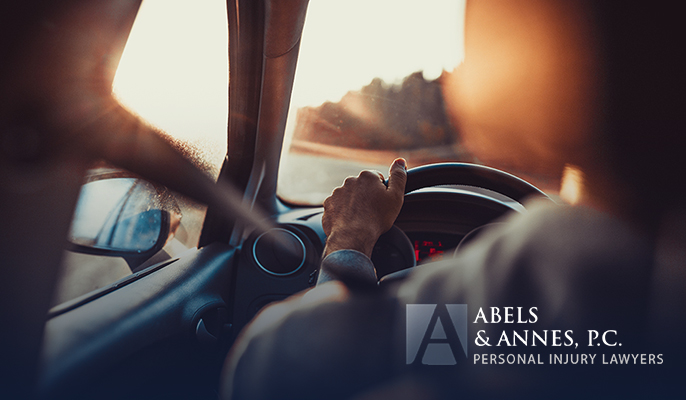With miles of breathtaking landscapes and year-round warm weather, it should come as no surprise that Arizona is one of the motorcyclists’ favorite states for riding bikes. Riding a motorcycle is a thrilling experience. Unfortunately, it’s also dangerous when the drivers around you fail to pay attention.
Many people who consider buying a bike do not understand Arizona’s motorcycle helmet laws. Does Arizona law require all riders to wear helmets? Are riders required to wear any other safety equipment such as glasses, goggles, or gloves?
If you suffered injuries in a motorcycle accident and you did not wear a helmet at the time of the collision, you might wonder whether or not your failure to wear a helmet can hurt your motorcycle accident claim. Consider speaking with an experienced motorcycle accident attorney to discuss your specific case and learn about your rights and obligations under Arizona law.
What Is the Motorcycle Helmet Law in Phoenix, Arizona?
Motorcyclists in Phoenix and elsewhere in the State of Arizona must obey all traffic laws that exist for car drivers. However, there are also special rules for motorcycle riders. Motorcycle helmet law is one of them.
Under Arizona Revised Statutes § 28-964, all riders under the age of 18 must wear a helmet any time they operate their bike. While there is no requirement for adult riders to wear a helmet, the law requires all riders, regardless of age, to wear some form of protective eyewear (goggles, glasses, or transparent face shields on helmets).
The only exception to the eye protection requirements is if the motorcycle is equipped with windshields that protect the rider’s eyes.
Does Wearing a Motorcycle Helmet Protect a Rider From Injuries?
Although Arizona law does not require motorcyclists over the age of 18 to wear a helmet, it does not mean that they should not wear one. Studies show that helmets effectively protect riders from severe and life-threatening injuries.
According to the Arizona Department of Public Safety, half of the motorcycle riders who died in fatal crashes in 2016 were not wearing a helmet. The National Highway Traffic Safety Administration (NHTSA) shows similar results. According to the NHTSA report, motorcycle riders who wear helmets have a 37 percent greater chance of surviving a collision than those who ride without a helmet.
Motorcycle helmets can protect riders from various injuries, including traumatic brain injuries (TBIs), facial trauma, and disfigurement. In addition, wearing a helmet also protects the rider from sun glare, wind, bugs, dust, rocks, and debris.
If you decide to ride a motorcycle with a helmet, make sure that you purchase a helmet that was approved by the U.S. Department of Transportation (DOT). The helmet should fit your head properly.
Reasons a Motorcyclist May Want to Wear a Helmet
Even though Arizona laws do not require adult motorcyclists to wear a helmet, we recommend that you wear one for your own safety. Many riders opt out of wearing a helmet because they think they do not look “cool” in them.
However, reasonable motorcyclists might want to consider wearing a helmet because:
- A helmet can save your life and prevent debilitating injuries. As mentioned earlier, helmets help prevent injuries, including TBIs, concussions, contusions, skull fractures, and many more. Motorcycle helmets should absorb the force of impact when the motorcyclist’s head hits another vehicle, the ground, or other objects. Helmets cover the top of the head and a portion of the rider’s face. According to the U.S. General Accounting Office (GAO), riders wearing a helmet have up to a 73 percent lower fatality rate than those who do not wear helmets. Helmeted riders also have up to an 85 percent lower risk of suffering severe and critical injuries.
- A helmet can protect the rider from various hazards. A motorcyclist can encounter hazards while riding a motorcycle. Some of the most common hazards motorcycle riders face when riding a bike include wind, bugs, sun glare, rain, gravel, rocks, dust, and other debris. A motorcycle helmet aims to minimize the rider’s exposure to these hazards and keep them safe on the road.
- A helmet makes the rider more visible to other motorists. Many motorcycle crashes occur because other motorists fail to see the rider in their rear- and side-view mirrors. Many helmets with reflective material make riders more visible to others on the road.
- Wearing a helmet can help the rider receive maximum compensation in the event of accidents. An insurance company is likely to undervalue your motorcycle accident claim if you suffered injuries in a motorcycle collision while not wearing a helmet. Helmet use can maximize your compensation.
Consider contacting an experienced attorney to discuss your motorcycle accident case and help you recover maximum compensation on your behalf.
Other Motorcycle Laws in Arizona
Motorcycle helmet laws are not the only laws that apply to motorcyclists in Arizona.
Specific laws for motorcycle riders in Arizona also include:
- Arizona Revised Statutes § 28-903 states that motorcyclists are entitled to the full use of a lane. The law also prohibits riders from overtaking and passing other vehicles in the same lane of traffic. In other words, it means that lane splitting is illegal in Arizona. Finally, the law prohibits riders from operating a motorcycle more than two abreast in a single lane.
- Arizona Revised Statutes § 28-892 prohibits motorcyclists from riding with passengers if their bikes should not carry passengers. A motorcyclist must also have a seat for the rider.
- Arizona Revised Statutes § 28-924 requires motorcyclists to have at least one but no more than two headlamps in compliance with requirements of the state law.
In addition, under Arizona Revised Statutes § 28-3101, all riders operating a motorcycle must have a Class M endorsement on their license.
What Is a DOT-Approved Motorcycle Helmet?
As you might have noticed, some motorcycle helmets have U.S. Department of Transportation approval.
To meet DOT-approved standards, the helmet must:
- Weight no less than three pounds;
- Be secured to the user’s head by chinstraps (DOT-certified helmets have sturdy chin straps);
- Have a label indicating who manufactured the helmet, the model name, the materials used in its design, and the year of manufacture;
- Have an inner liner about one inch thick;
- Have nothing that extends further than one-fifth of an inch from the surface of the helmet; and
- Have a sticker saying that the helmet is DOT-certified.
If you are looking for a motorcycle helmet, it is best to purchase a helmet that the Department of Transportation approved and certified to ensure maximum protection.
Other Types of Safety Gear for Motorcyclists
A helmet is not the only protective gear that helps avoid or reduce the severity of injuries in motorcycle accidents.
Other types of safety gear for motorcycle riders include:
- Jacket. A motorcyclist’s jacket should consist of study materials to protect the rider from objects that may hit your body while riding a motorcycle. The jacket should also be visible to other motorists to ensure that everyone can see you on the road. Jackets also protect riders from road rash if the rider hits the pavement.
- Gloves. A motorcycle rider should have a pair of gloves to protect their hands and wrists in the event of a collision.
- Pants. Ideally, a rider should wear leather pants and never opt for shorts. Other sturdy materials can also be good to protect the rider’s legs.
- Boots. A good pair of boots protect the rider’s legs and feet from exposure to the bike’s hot metal as well as rocks and other objects that may hit the rider’s body while riding.
Motorcyclists are some of the most vulnerable road users, which is why they should wear various types of safety gear to protect them from severe and life-threatening injuries in the event of collisions.
Frequently Asked Questions (FAQs) About Motorcycle Helmets and Accidents
What are the consequences of not wearing a motorcycle helmet?
Riders who opt out of wearing a motorcycle helmet are more likely to suffer potentially deadly traumatic brain injuries in the event of accidents. A traumatic brain injury is often associated with life-altering consequences.
A motorcyclist with a TBI may experience side effects and problems. Some of the most common effects of head trauma include problems with thinking and cognitive abilities, vision problems, loss of motor skills, confusion, problems with walking, seizures, memory problems, paralysis, and many more.
Can a rider recover damages if he/she is not wearing a motorcycle helmet?
Yes, a motorcycle rider can still recover damages even if they were not wearing a helmet at the time of the collision. Even if the insurance company argues that the rider can have reduced the severity of their injury by wearing a helmet, it is vital to keep in mind that helmets cannot protect against all types of injuries.
In addition, a rider’s failure to wear a helmet does not undo the fact that the other party involved in the crash was negligent. If the insurance company refuses to offer you a fair settlement because you failed to wear a helmet, consider contacting a skilled attorney to advocate your rights and help you fight for the compensation you deserve.
Should you communicate with the insurance company?
When communicating with the insurance company, you should keep it brief and stick to the facts. Keep in mind that the insurance company is a for-profit organization that cares about maximizing its revenue.
Insurance companies often employ a variety of dishonest and unfair tactics to undervalue or deny a claim. One of the most common tactics insurers use to pay injured victims as little as possible is making the victim make contradictory statements. If the insurance company asks you to give a recorded statement, decline to provide the statement until you consult with your attorney.
How long will it take to resolve your motorcycle accident case?
The time it takes to settle a personal injury claim arising from a motorcycle accident depends on many factors involved in the victim’s case. Typically, the success of your claim hinges on the availability of evidence supporting your claim and the insurance company’s cooperation.
An insurance company may delay the claims process or otherwise act in bad faith in an attempt to avoid paying the claim or make you accept a lowball settlement offer. Your attorney will protect your rights during the claims process and may take your case to court if you do not reach a fair settlement during negotiations.
Should you accept a settlement offer after a motorcycle accident?
You might want to consider speaking with a knowledgeable attorney if the insurance company offers you a settlement shortly after your motorcycle accident. Even if the offer seems generous and adequate, you may need your attorney to determine the actual value of your claim and advise on your best course of action.
How much can a victim of a motorcycle collision receive?
The value of your claim following a motorcycle crash depends on many factors. If you suffered severe or disabling injuries, your claim can be worth hundreds of thousands of dollars. You cannot estimate your damages and losses without examining all of the details of your case.
Do you need an attorney to help you with your motorcycle accident case?

In the vast majority of motorcycle accidents, the motorcyclist is not at fault. Many of these collisions occur either because a car driver fails to see or yield the right of way to a motorcycle rider. However, insurance companies are biased against motorcycle riders in personal injury cases. That is why the process of obtaining financial compensation after the collision may be challenging.
If you suffered injuries in a motorcycle crash, you might want to hire a skilled attorney to handle your claim and gather all the evidence necessary to obtain the maximum compensation you deserve.
If you do not understand the motorcycle helmet laws in your state or you were not wearing a helmet at the time of the collision, you might want to discuss your case with an experienced motorcycle accident lawyer.


